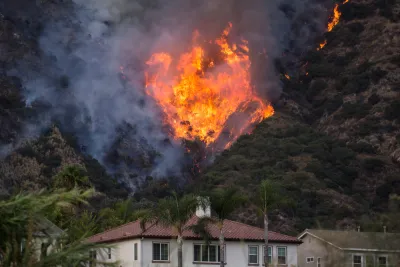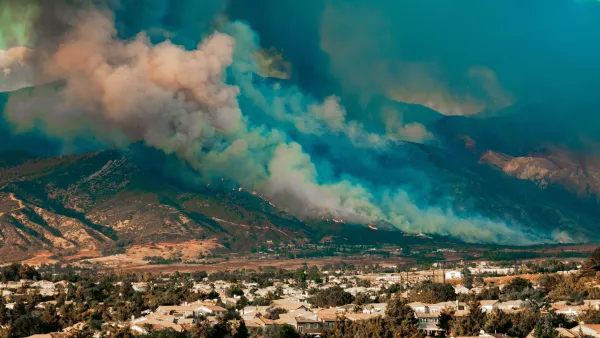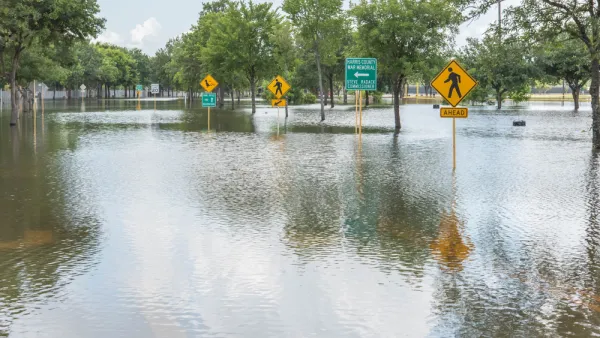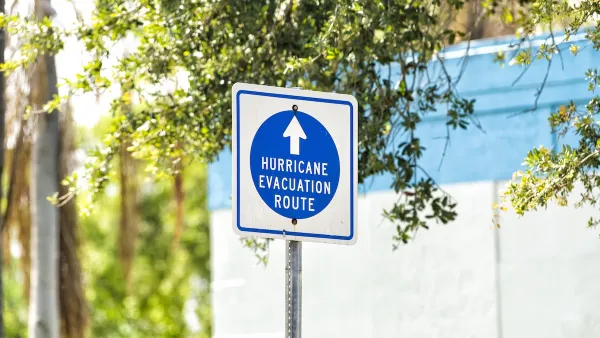Environmental risks are becoming too much for the home insurance industry to bear. Could this be the first signs of the collapse and reversal of sprawling land use patterns?

Los Angeles Times columnists Erika D. Smith and Anita Chabria write that California shouldn’t expect home insurers to stick around if the state continues to build in unsafe areas at constant risk for wildfires and extreme weather events.
“Our most vulnerable communities often lie in our most vulnerable regions: mountains marred by years of unprecedented wildfires, or Central Valley farm fields drowned in record rains and now epic snowmelt,” according to the column. The wake up call needed to reverse decades of sprawling development patterns, according to Smith and Chabria, might come from the home insurance industry.
According to previous coverage in the Los Angeles Times, State Farm General Insurance Co. announced recently that it would no longer accept new applications for property and casualty coverage in California because of wildfire and construction costs. Allstate Corp. also recently informed the state Department of Insurance that it stopped selling new home insurance policies last year. Allstate is also seeking a nearly 40% rate increase for home and business property and casualty insurance, according to the article.
Planetizen also picked up the news about insurers “fleeing” California, but it should be noted that insurers are also leaving Florida, where insurance premiums are already much higher than in California—and other states facing climate risks along coastlines or at wildland-urban interfaces shouldn’t expect to be spared the same drama forever.
According to the source article, linked below, California is still at risk of doubling down on sprawl, following years of historic housing legislation intended to spur new residential development.
“The problem is Newsom and his administration have required little oversight of where all this housing is being built. Nor have they communicated a cohesive philosophy about mitigating the current and future development risks linked to climate change,” write Smith and Chabria.
FULL STORY: Column: State Farm is right. California can’t keep building housing in high-risk places

National Parks Layoffs Will Cause Communities to Lose Billions
Thousands of essential park workers were laid off this week, just before the busy spring break season.

Retro-silient?: America’s First “Eco-burb,” The Woodlands Turns 50
A master-planned community north of Houston offers lessons on green infrastructure and resilient design, but falls short of its founder’s lofty affordability and walkability goals.

Delivering for America Plan Will Downgrade Mail Service in at Least 49.5 Percent of Zip Codes
Republican and Democrat lawmakers criticize the plan for its disproportionate negative impact on rural communities.

Test News Post 1
This is a summary

Test News Headline 46
Test for the image on the front page.

Balancing Bombs and Butterflies: How the National Guard Protects a Rare Species
The National Guard at Fort Indiantown Gap uses GIS technology and land management strategies to balance military training with conservation efforts, ensuring the survival of the rare eastern regal fritillary butterfly.
Urban Design for Planners 1: Software Tools
This six-course series explores essential urban design concepts using open source software and equips planners with the tools they need to participate fully in the urban design process.
Planning for Universal Design
Learn the tools for implementing Universal Design in planning regulations.
EMC Planning Group, Inc.
Planetizen
Planetizen
Mpact (formerly Rail~Volution)
Great Falls Development Authority, Inc.
HUDs Office of Policy Development and Research
NYU Wagner Graduate School of Public Service





























